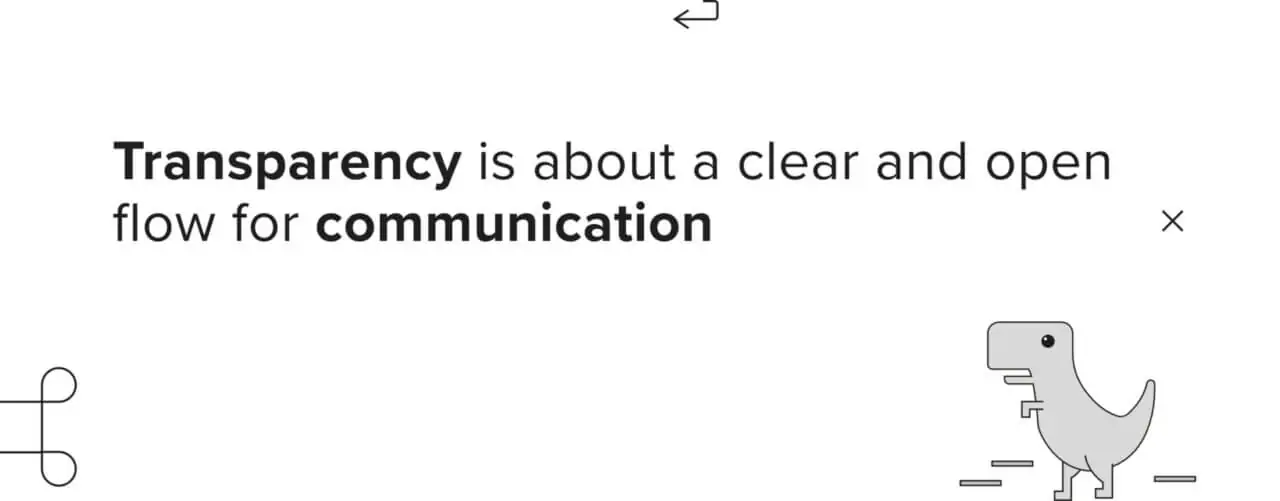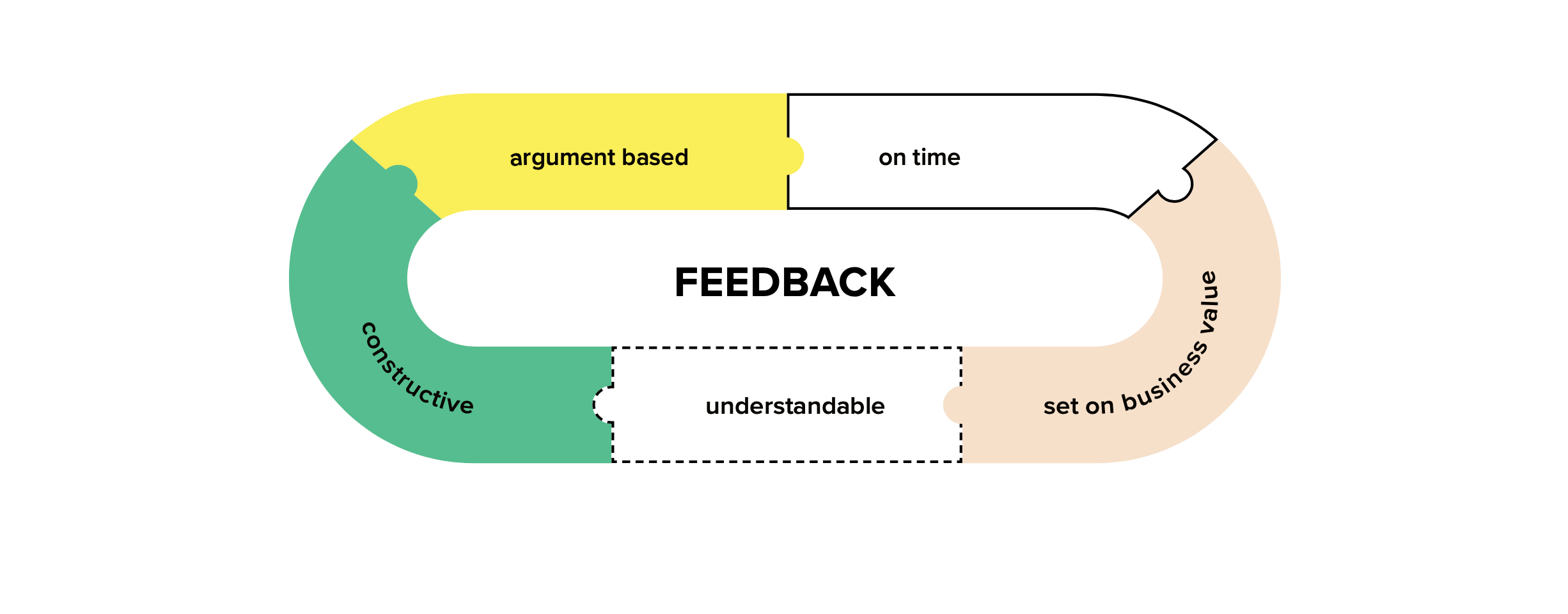Agile benefits: transparent software development
Agile software development methodologies have become increasingly popular in recent years due to their focus on collaboration, flexibility, and transparency. Among the various agile frameworks, Scrum stands out as the most effective tool for creating transparent software development processes. In this article, we’ll explore why agile and Scrum help to maintain transparency in software development and what transparent software development actually looks like.
Table of contents:
1. Empirical Scrum
2. How transparent is a budget and estimation delivery
3. Risk management
4. What gets in the way of a transparent agile process
5. Stakeholders can boost transparency, how?
6. Summary
Transparency in software development refers to a clear and open flow of information between all stakeholders involved in the project. This includes the development team, the product owner, and any other stakeholders such as business representatives. When software development is transparent, everyone involved has a clear understanding of what is happening, what has been achieved, and what still needs to be done. This leads to better decision making, fewer misunderstandings, and a more efficient development process.
Scrum is an agile framework that was specifically designed to create transparency in software development. It emphasizes the importance of collaboration and communication between all stakeholders and provides a structure for these interactions. Scrum is based on a series of regular meetings, where the scrum team discusses their progress and any obstacles they have encountered. During these meetings, the product owner is able to provide feedback and make any necessary changes to the development plan. This continuous communication and collaboration helps to maintain transparency throughout the software development process.

Scrum and its empirical process
One of the key benefits of Scrum is that it provides a clear, measurable process for software development. The Scrum framework outlines the roles and responsibilities of each stakeholder, and provides a clear set of rules and procedures for how the development process should be carried out.
Another important aspect of Scrum is the focus on delivering working software. Rather than focusing on documentation and planning, Scrum emphasizes the importance of delivering working software as quickly as possible. This allows for more frequent feedback from the product owner, and helps to ensure that the development process is aligned with the needs of the business.
Scrum and its clear process, measurable goals, and a focus on delivering working software, all of that helps to create transparency in software development. If you’re looking to create a digital product in a transparent and collaborative manner, seriously consider incorporating Scrum into your development process. Or in other words, treat scrum as a foundation and necessity to build software products in a transparent way.
More must-have knowledge about Scrum you can find in our Scrum vs Kanban guide.
The budget and delivery estimation. Are they transparent in agile?
Scrum and agile methodologies have a strong relationship with product budget planning and time estimation in software development, and this relationship is closely tied to the transparency of the development process.
In agile methodologies, time and budget are treated as variables that are flexible and subject to change based on the needs of the project. This means that the development team must continuously re-evaluate the project schedule and budget based on the project progress being made and any changes to the requirements or constraints of the project.
The scrum framework provides a structure for this process, with sprint backlog, sprint review and sprint retrospective serving as opportunities for the scrum team to review and adjust the delivery estimation and budget based on what has been learned. This allows the scrum team to be flexible and respond to changes quickly, ensuring that the product is delivered within a reasonable timeframe and budget.

The transparency of this process is maintained through regular communication with stakeholders, who are kept informed of the project’s progress and any changes to the schedule or budget. This helps to build trust and collaboration between the scrum team members and stakeholders, and ensures that the product being delivered is aligned with the stakeholders’ needs and expectations.
As you can see, the relationship between scrum and agile methodologies, product budget planning, and time estimation is one of continuous evaluation and adjustment, with the ultimate goal of providing a high-quality product within a reasonable timeframe and money. This relationship is critical to the transparency of the software development process, and helps to deliver final product that brings business value.
Transparent risk management. Is it real?
Agile methodologies, particularly scrum, provide a robust framework for managing risks during software development projects. The transparent nature of the development process allows stakeholders to have real-time visibility into the project and to make informed decisions about how to mitigate risks.
One of the key benefits of agile and scrum is the ability to regularly reassess and adjust project plans and goals. This adaptive approach means that risks can be identified and addressed early on, before they become major issues. By constantly reassessing and adjusting project plans, the development team can stay on track and minimize the impact of risks, ensuring that the project stays on budget and on schedule.
Check here our full point of view on managing risk with agile methodology.
Another advantage of agile and scrum is the close collaboration between stakeholders and the scrum team. This collaboration allows for regular communication about project risks, allowing stakeholders to make informed decisions about how to manage them. The transparency aspect plays again an important role as it ensures that stakeholders have full visibility into the project, which enables make the risk discussion more effective.

In addition, the iterative and incremental approach of agile and scrum allows teams to focus on delivering small, manageable portions of the project – increments which reduces the overall risk of the project. This approach allows teams to make course corrections early on and to minimize the impact of risks.
Overall, agile and scrum confirm the hypothesis: transparency reduces project risk. The transparent development process, regular reassessment of project goals, and close collaboration between stakeholders and the development team are all critical factors in managing project risks effectively. So, businesses can trust in agile and scrum as a reliable solution for managing project risks and delivering software products that deliver value to their organizations.
What does harm to the transparent software development
In Agile methodologies, such as Scrum, transparency in the product development process is crucial to ensure that the project is on track and delivering business value to stakeholders. However, there are several dangers that can harm this transparency and negatively impact the whole process. Some of these dangers are:
Lack of communication
Poor communication between the agile team, project manager, stakeholders, and other involved parties can lead to misunderstandings and misaligned expectations. This can harm the transparent development process and result in increased project risk including delays, rework, and decreased quality.
Unclear Requirements
If the requirements are not well-defined, the agile team may not have a clear understanding of what they are supposed to deliver. This can lead to confusion and a lack of transparency, as well as an increased risk of delivering something that does not meet the stakeholders’ needs.
Resistance to change
Agile methodologies require a willingness to embrace change and adapt to new information and requirements as the project progresses. If stakeholders or the development team resist change, this can harm the transparent development process and lead to delays and poor product’s quality..

Inadequate defined acceptance criteria
Acceptance criteria provide a clear definition of what the entire team should deliver and what constitutes a „done” increment. If these criteria are poorly defined or not agreed upon by all stakeholders, it can harm the transparent development process and result in misunderstandings.
To counteract these dangers the entire team must bet on transparent collaboration
„Stakeholders and the development team should work together to establish clear and effective communication channels, ensure that requirements are well-defined and understood by all” Igor Podlawski CEO Software Things
Additionally, daily meetings and regular retrospectives can help to identify and address any issues that arise, ensuring that the transparent development process remains on track.
It’s wise to be aware of these dangers and take proactive steps to counteract them. However, the engagement of all parties involved is required. Stakeholders and the scrum team can maintain transparency in the product development process and deliver a high-quality product that meets the business needs and has a potential to bring profits.
How business representative can enhance transparency in software development
As a stakeholder in a software development project, there are several steps you can take to strengthen transparency and ensure that the product will be of value to your business. These include:
Clear communication
Ensure that clear and open lines of communication are established between yourself, the development team, and other stakeholders. This will help to ensure that everyone has a shared understanding of the project goals and requirements, and that any misunderstandings or misaligned expectations are quickly addressed.

Active involvement
Actively participate in the development process by attending sprint retrospectives, sprint demos, and other project meetings. This will give you a firsthand understanding of the progress being made and help to ensure that the product being developed is aligned with your business needs.
Clearly defined requirements
Ensure that the requirements for the product are well-defined and agreed upon by all stakeholders. This will provide the development team with a clear understanding of what they need to deliver and help to ensure that the product meets your business needs.
Regular reviews
Schedule regular reviews of the product and its progress, to ensure that it is on track and that any issues or risks are quickly identified and addressed.
Embrace flexibility
Agile methodologies require a willingness to embrace change and adapt to new information and requirements as the project progresses. As a stakeholder, be open to change and flexible in your approach, and work with the development team to ensure that the product is delivered in a way that meets your business needs.
In conclusion, by being proactive, engaged, and flexible, stakeholders can play a key role in ensuring the transparency of the software development process and delivering a product that is of value to their business. By doing so, they can help to build trust and collaboration with the scrum team and ensure that the project is a success.
If you are interested in more bussiness-adapted tips on running project with agile, check our guide for stakeholders.
Transparent scrum works well, bet on it.
Finally, agile methodologies, particularly the scrum framework, offer a dynamic solution for crafting software products that meet the demands of the business. The transparency in software development, facilitated by agile approach and scrum values is crucial in guaranteeing the delivered product is of significant worth to the business, and stakeholders are equipped with the necessary information and insights to make informed choices about the product’s advancement.
For business leaders striving to create digital products that will make a substantial impact on their organizations, opting for agile methodologies and embracing the openness that comes with it is a savvy decision. By utilizing the continual feedback and adjustment systems inherent in agile methodologies, businesses can guarantee the software products they create are closely aligned with their requirements and achieve the desired results.
Read more about

Contact
Benefit from a free consultation
Ready to turn your software idea into reality? Collaborating with us means benefiting from our experience, expertise, and cutting-edge technology to bring your vision to life. Simply share a few words with us about your idea, and our expert will reach out to ask the ring questions.



